Documents and Checklists
Securely and efficiently manage, organize, share and store employee documents in our document management software
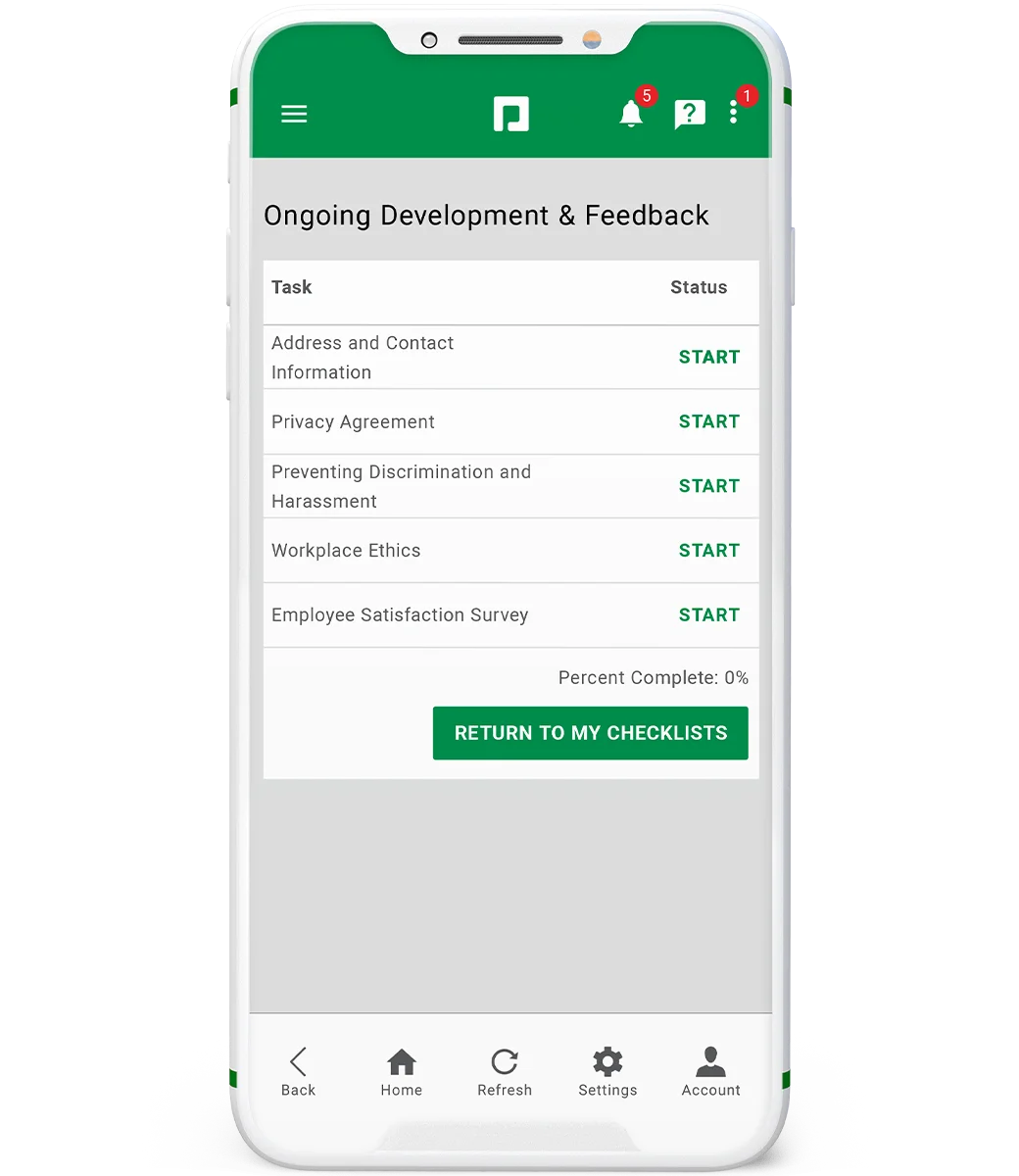

How it works
Work smarter with our HR document management software
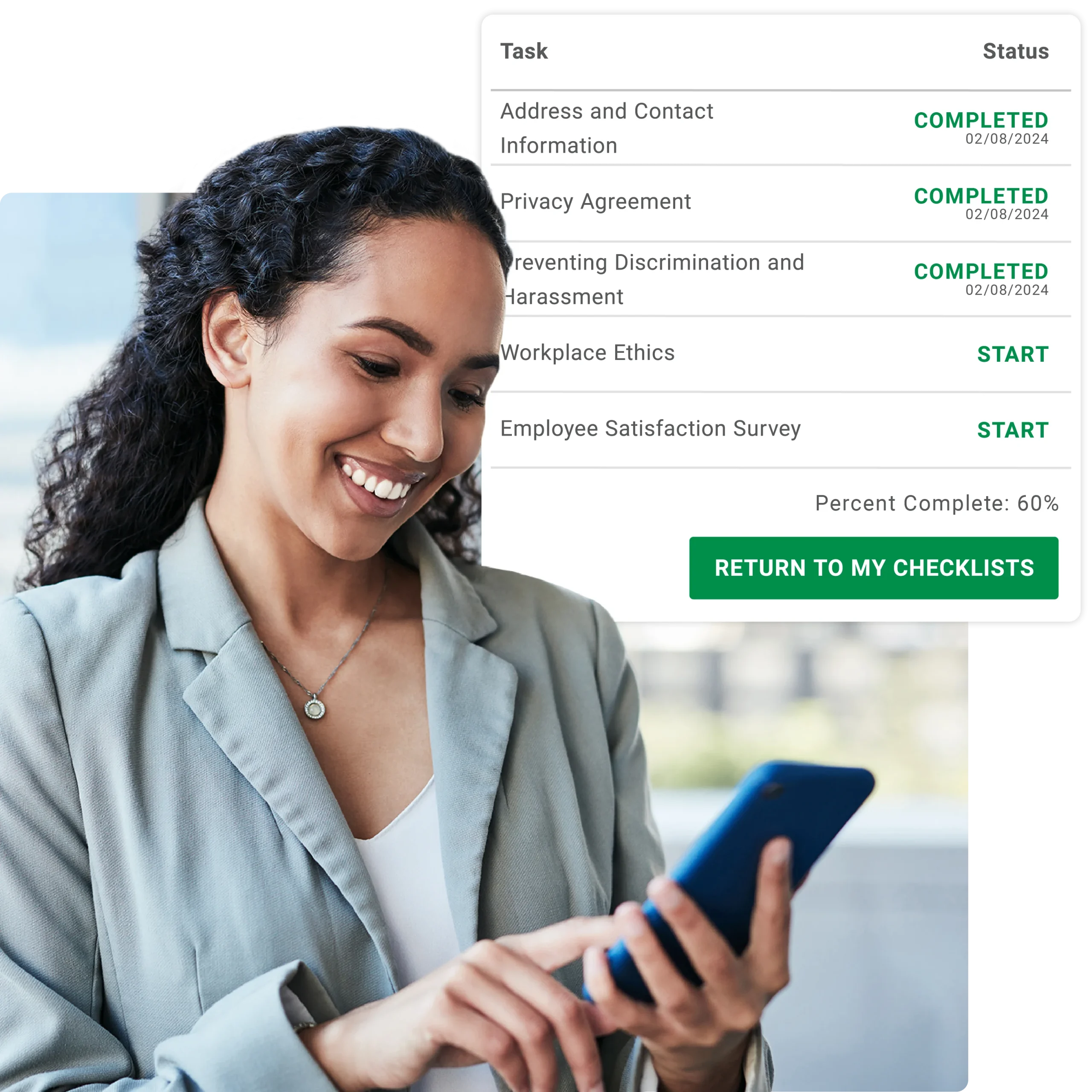
Paycom’s Documents and Checklists tool automates traditional paper processes in a single software for an easier, more secure way to create and manage employee files.

Shred your burdens with automation
Digital checklists eliminate traditional paper processes by automatically assigning documents and tasks for employees to complete anytime, anywhere through our mobile app. This frees HR from redundant administrative processes and chasing down people to complete tasks.
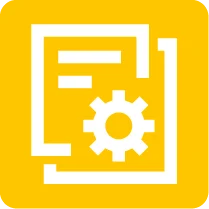
Control your data for compliance
Store documents digitally, from I-9s to W-4s and more, to help ensure compliance with the U.S. Department of Labor and other government agencies. With employees filling out their own forms, their accurate data flows into their files — reducing errors and the risk of fines and penalties.
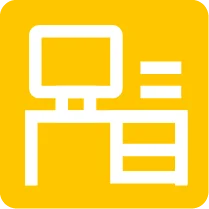
Keep your data secure
Ditching paper for digital files in our document management software helps protect important information from unauthorized access and natural disasters. Our industry-proven security standards — including 256-bit encryption technology, multiple off-site backup locations and 24/7 monitoring — add deep layers of protection.

What it does
Streamline tasks for the entire employee life cycle
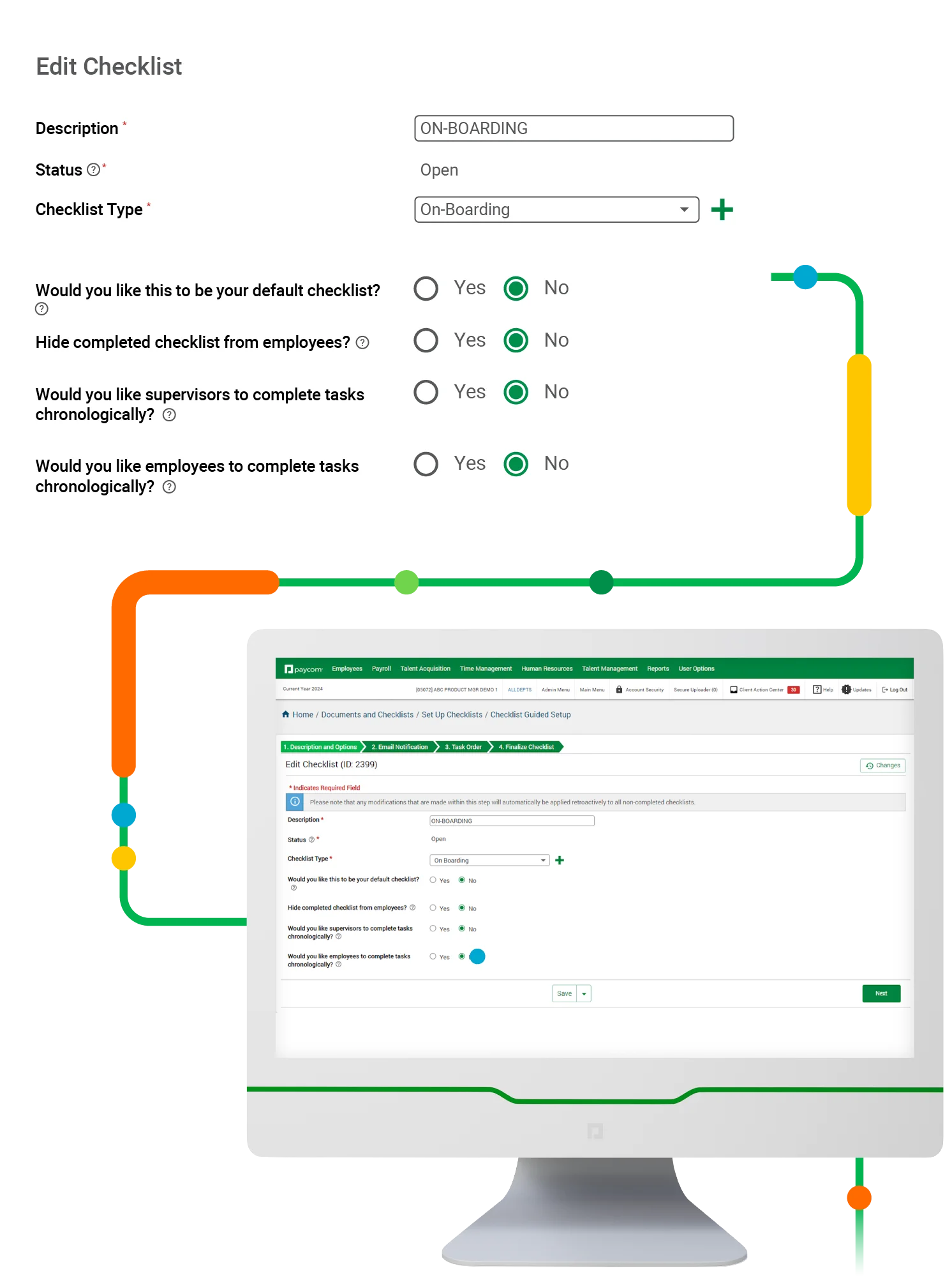
Simplify complex, multistep processes with a user-friendly experience for you and your employees. We make it easy to schedule and assign documents and checklists for completion, as well as review and track employee progress.

Simplified onboarding
Allow new hires to read the employee handbook, e-sign company policies, watch training courses and even enroll in benefits — all before Day 1.
Robust reporting
Our document management software helps make sure you stay compliant with comprehensive audit reporting.
Communication that fits you
Customize acknowledgments and notifications to establish clear expectations and communication while helping you achieve your organization’s goals.
Empowered employees
Allowing employees to manage their documents and tasks helps reduce errors and compliance risk. Once documents are completed, they’re automatically added to their personnel file.
See what people are saying about Documents and Checklists
Frequently Asked Questions
Learn more about document management software
Document management software enables you to create, assign, archive and retrieve forms and to-do lists with ease, so your organization can streamline processes like onboarding and training while helping ensure compliance with laws and regulations.
Documents and Checklists can be utilized across the entire employee life cycle, providing organization and centralized document storage, streamlining workflows and reducing manual tasks. Additional uses could include documenting processes, such as:
- performance reviews
- mandatory trainings or professional development programs
- employee relations
- offboarding
- expense approvals
A single database offers several advantages, including:
- centralized storage
- improved organization
- enhanced security
- data integrity
- efficient search and retrieval
- reduced redundancy
- improved collaboration
- Tasks can be automatically assigned to specific individuals or groups, scheduled based on specific dates or triggered by specific events.
- Notifications can be sent to users when assignments are made, due or overdue, or if an approval is needed.
- Fields within documents or templates can be prepopulated with employee information.
- Documents can be automatically routed for approvals based on a predefined workflow.
- Completed or uploaded documents are automatically added to employee personnel files.
With Paycom, documents live in one place, easily searchable through a document management dashboard. Because it’s in our truly single software, backed by comprehensive ISO- and SOC-certified security standards, you get peace of mind your data stays where it belongs: with you.
Documents and Checklists eliminates paper processes, reducing printing and paper costs. By automating onboarding and training tasks, as well as document updates, you also cut costs associated with HR completing them manually.
Onboarding has never been easier with Documents and Checklists. Assign an onboarding checklist with the touch of a button and Paycom automatically populates everything employees need to get started. Empower new hires to read the employee handbook, e-sign company policies, watch training courses and even enroll in benefits — all before Day 1.
